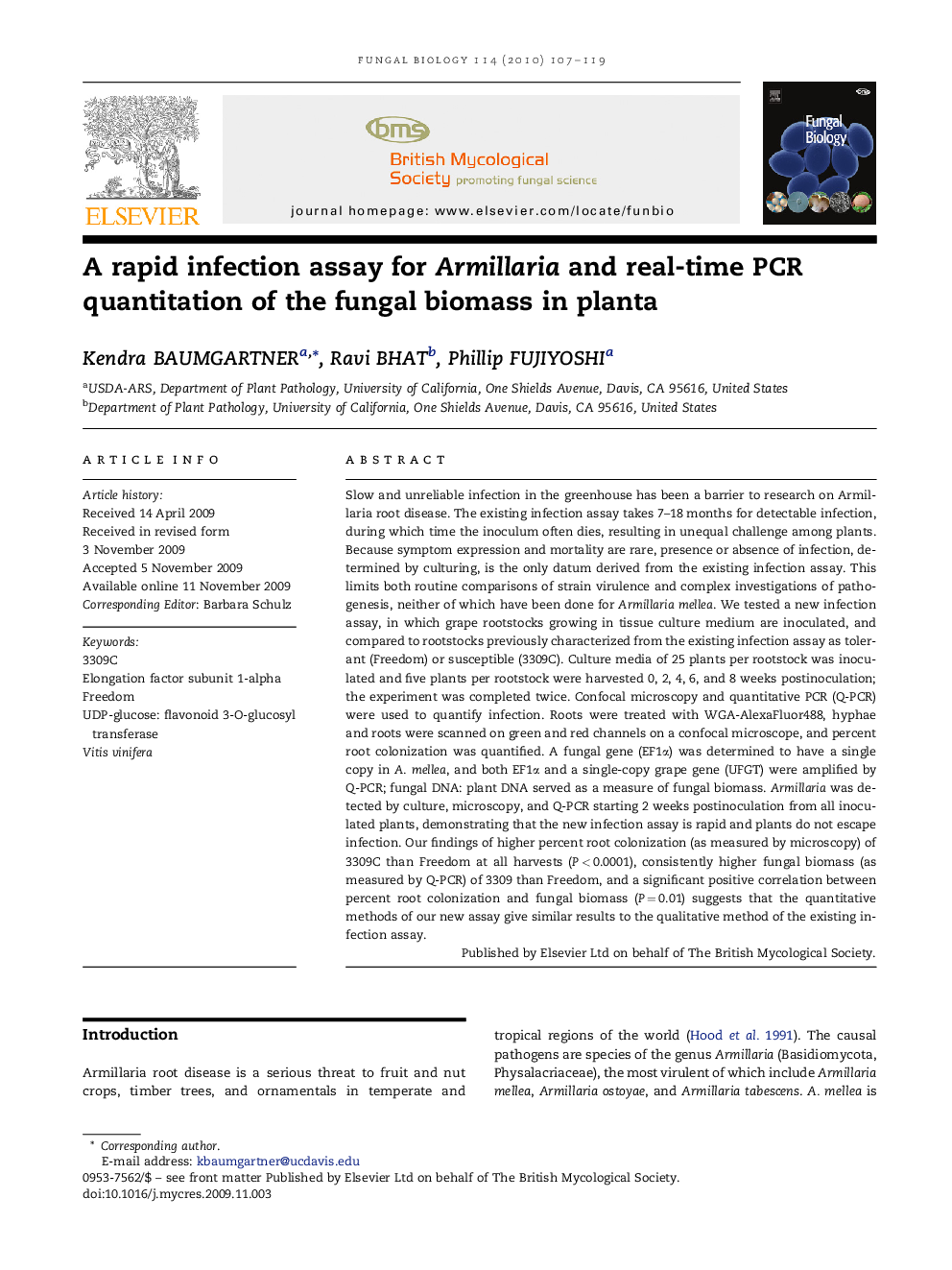| کد مقاله | کد نشریه | سال انتشار | مقاله انگلیسی | نسخه تمام متن |
|---|---|---|---|---|
| 4357366 | 1300054 | 2010 | 13 صفحه PDF | دانلود رایگان |

Slow and unreliable infection in the greenhouse has been a barrier to research on Armillaria root disease. The existing infection assay takes 7–18 months for detectable infection, during which time the inoculum often dies, resulting in unequal challenge among plants. Because symptom expression and mortality are rare, presence or absence of infection, determined by culturing, is the only datum derived from the existing infection assay. This limits both routine comparisons of strain virulence and complex investigations of pathogenesis, neither of which have been done for Armillaria mellea. We tested a new infection assay, in which grape rootstocks growing in tissue culture medium are inoculated, and compared to rootstocks previously characterized from the existing infection assay as tolerant (Freedom) or susceptible (3309C). Culture media of 25 plants per rootstock was inoculated and five plants per rootstock were harvested 0, 2, 4, 6, and 8 weeks postinoculation; the experiment was completed twice. Confocal microscopy and quantitative PCR (Q-PCR) were used to quantify infection. Roots were treated with WGA-AlexaFluor488, hyphae and roots were scanned on green and red channels on a confocal microscope, and percent root colonization was quantified. A fungal gene (EF1α) was determined to have a single copy in A. mellea, and both EF1α and a single-copy grape gene (UFGT) were amplified by Q-PCR; fungal DNA: plant DNA served as a measure of fungal biomass. Armillaria was detected by culture, microscopy, and Q-PCR starting 2 weeks postinoculation from all inoculated plants, demonstrating that the new infection assay is rapid and plants do not escape infection. Our findings of higher percent root colonization (as measured by microscopy) of 3309C than Freedom at all harvests (P < 0.0001), consistently higher fungal biomass (as measured by Q-PCR) of 3309 than Freedom, and a significant positive correlation between percent root colonization and fungal biomass (P = 0.01) suggests that the quantitative methods of our new assay give similar results to the qualitative method of the existing infection assay.
Journal: Fungal Biology - Volume 114, Issue 1, January 2010, Pages 107–119